In 1898 Arthur Berry noted the 900-year near-stagnation in Astronomy during the Middle Ages.
Recommended by the Encyclopaedia Britannica as a standard work, Berry's "History of Astronomy" has the unusual distinction of more than fifty years of continuing popularity.Assuming ancient astronomers only made discoveries of "first-rate importance" every 100 years then this "900-year near-stagnation" can be topped and tailed down to 700 years.
Used by college students in both England and America, it has also provided laymen in both countries with an accurate and easily understandable account of the great achievements of Copernicus, Galileo, Kepler, Newton, and the 19th-century astronomers of France, Germany, England and America.
A study not so much of men as of their work, it makes a stirring record of our advances in knowledge of the universe accessible to all.
The author devotes his first three chapters to pre-Copernican astronomy, covering primitive views, the speculations of the Greek astronomers from Thales and Pythagoras to Hipparchus and Ptolemy, and the 900-year near-stagnation of the Middle Ages.
Back Cover:
Short History of Astronomy - Arthur J. Berry - Dover Publications - 1961© AmazonShort History of Astronomy
About fourteen centuries elapsed between the publication of the Almagest and the death of Copernicus (1543), a date which is in astronomy a convenient landmark on the boundary between the Middle Ages and the modern world.Regardless of how this "900-year near-stagnation" is interpreted it's evident astronomy only began to arrive in Christian Europe late in the 10th century i.e. after the Heinsohn Horizon.
In this period, nearly twice as long as that which separated Thales from Ptolemy, almost four times as long as that which has now elapsed since the death of Coppernicus, no astronomical discovery of first-rate importance was made.
Short History of Astronomy - Arthur J. Berry - 1898
https://archive.org/stream/shorthistoryofas00unse#page/76/mode/1up
In the 10th century the fame of the Arab learning began slowly to spread through Spain into other parts of Europe, and the immense learning of Gerbert, the most famous scholar of the century, who occupied the papal chair as Sylvester II, from 999 to 1003, was attributed in large part to the time which he spent in Spain, either in or near the Moorish dominions.Additionally, the history of Hindu Astronomy suggests the thread of history breaks down before 950 AD i.e. close to the Heinsohn Horizon.
He was an ardent student, indefatigable in collecting and reading rare books, and was especially interested in mathematics and astronomy.
His skill in making astrolabes and other instruments was such that he was popularly supposed to have acquired his powers by selling his soul to the Evil One.
Other scholars shewed a similar interest in Arabic learning, but it was not till the lapse of another century that the Mahometan influence became important.
Short History of Astronomy - Arthur J. Berry - 1898
https://archive.org/stream/shorthistoryofas00unse#page/76/mode/1up
Pope Sylvester II or Silvester II (c. 946 - 12 May 1003) was Pope from 2 April 999 to his death in 1003.
Originally known as Gerbert of Aurillac, he was a prolific scholar and teacher.
He endorsed and promoted study of Arab and Greco-Roman arithmetic, mathematics, and astronomy, reintroducing to Europe the abacus and armillary sphere, which had been lost to Latin (though not Byzantine) Europe since the end of the Greco-Roman era.
He is said to be the first to introduce in Europe the decimal numeral system using Arabic numerals.
https://en.wikipedia.org/wiki/Pope_Sylvester_II
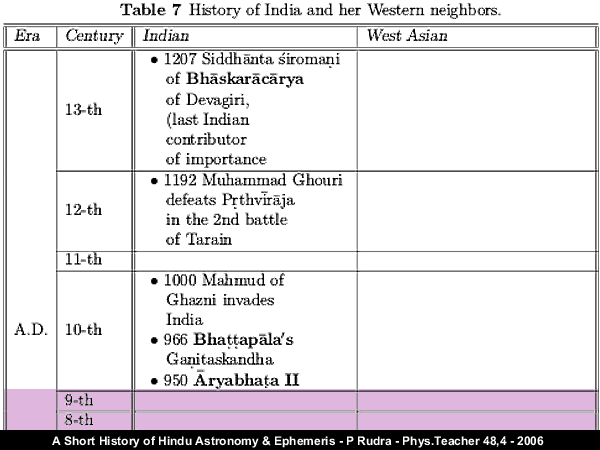
Reconciling the history of Hindu Astronomy with the history of Christian Europe suggests there is an 800 year period of "near-stagnation" between Ptolemy and Aryabhata II.With the beginning of the reign of Kaniska, the Kusana king, in 78 A.D. (201 in the Old Saka Era) the New Saka Era (omitting the 200 of the Old Saka Era) began in India.© Malaga BaySee The Arabian Horizon: The Big Chill
This is the Era par excellence in Hindu astronomy and no other Era could take its place in Hindu ephemeris.
The Sakas grafted Babylonian system on Hindu astronomy and by 400 A.D. the Siddhanta astronomy replaced the older Vedahga astronomy.
Aryabhata, perhaps the greatest Hindu mathematician cum astronomer, was born at Kusumapura near Pataliputra (modern Patna) in 476 A.D. and his monumental work Aryabhatiya was compiled in 499 A.D
The next important event (6th century A.D.) of Hindu astronomy is Varahamihira's Pahca-siddhantika, second only to the appearance of Aryabhatiya.
The last important contribution to Hindu astronomy came from Bhaskaracarya of Devagiri in 1207.
A Short History of Hindu Astronomy & Ephemeris - P. Rudra - 2006
https://archive.org/details/arxiv-0903.1778
But this reconciliation is very tenuous because "nothing is known" about these people.
Virtually nothing is known about Ptolemy's life except what can be inferred from his writings.What is "known" about Ptolemy and Aryabhata II is based solely upon supposition and inference.
Encyclopædia Britannica - Ptolemy - Alexander Raymond Jones
https://www.britannica.com/biography/Ptolemy
Essentially nothing is known of the life of Aryabhata II.
Aryabhata II - J J O'Connor and E F Robertson - Nov 2000
School of Mathematics and Statistics - University of St Andrews, Scotland
http://www-history.mcs.st-andrews.ac.uk/Biographies/Aryabhata_II.html
Virtually nothing is known about Ptolemy's life except what can be inferred from his writings.In other words:
Encyclopædia Britannica - Ptolemy - Alexander Raymond Jones
https://www.britannica.com/biography/Ptolemy© Mahasiddhanta A Treatise On AstronomyMahasiddhanta A Treatise On Astronomy
Ptolemy and Aryabhata II are "placeholder names" whose modern counterparts are John Doe and Joe Bloggs.
The names "John Doe" or "John Roe" for men, "Jane Doe" or "Jane Roe" for women, "Johnny Doe" and "Janie Doe" for children, or just "Doe" non-gender-specifically are used as placeholder names for a party whose true identity is unknown or must be withheld in a legal action, case, or discussion.By definition, the biographical details of the "placeholder" Ptolemy are very malleable.
The names "Joe Bloggs" or "John Smith" are used in the UK as placeholder names...
https://en.wikipedia.org/wiki/John_Doe
Claudius Ptolemy (c. AD 100 - c. 170) was a Greco-Roman mathematician, astronomer, geographer, astrologer, and poet of a single epigram in the Greek Anthology... He died there around AD 168.According to the official narrative the works of the "placeholder" Ptolemy only began to filter through into Christian Europe [in the form of Latin translations of Arabic translations] about 1,000 years after the "placeholder" is said to have died.
https://en.wikipedia.org/wiki/Ptolemy
Claudius Ptolemaeus (A.D. circa 85 - circa 165), known in English as Ptolemy, was a Greek astronomer who probably lived and worked in Alexandria in Egypt.
https://en.wikipedia.org/w/index.php?title=Ptolemy&oldid=3021186 [24 March 2004]
PTOLEMY (Claudius Ptolemaeus), the celebrated mathematician, astronomer and geographer, was a native of Egypt, but there is an uncertainty as to the place of his birth.
Some ancient manuscripts of his works describe him as of Pelusium, but Theodorus Meliteniota, a Greek writer on astronomy of the 12th century, says that he was born at Ptolemais Hermii, a Grecian city of the Thebaid.
1911 Encyclopædia Britannica, Volume 22 - Ptolemy
https://en.wikisource.org/wiki/1911_Encyclop%C3%A6dia_Britannica/Ptolemy
Claudius Ptolemaeus.... probably lived and worked in Alexandria in Egypt.
https://en.wikipedia.org/w/index.php?title=Ptolemy&oldid=3021186 [24 March 2004]
Ptolemy was the author of two important scientific treatises.A peculiarity of the "placeholder" Ptolemy narrative is that Greek versions of the texts only began to appear after Arabic versions had been translated into Latin.
One is the astronomical treatise that is now known as the Almagest.
It was preserved, like most of Classical Greek science, in Arabic manuscripts (hence its familiar name) and only made available in Latin translation (by Gerard of Cremona) in the 12th Century.
https://en.wikipedia.org/w/index.php?title=Ptolemy&oldid=3021186 [24 March 2004]
Gerard of Cremona's Latin translation of the Arabic version of Ptolemy's Almagest made c. 1175 was the most widely known in Western Europe before the Renaissance.
https://en.wikipedia.org/wiki/Gerard_of_Cremona
Versions of Ptolemy's work in antiquity were probably proper atlases with attached maps, although some scholars believe that the references to maps in the text were later additions.Another peculiarity of the "placeholder" Ptolemy narrative is that his science appears to belong to a period of time "three centuries earlier".
No Greek manuscript of the Geography survives from earlier than the 13th century.
https://en.wikipedia.org/wiki/Geography_(Ptolemy)#Manuscripts
Ptolemy's Geographia was printed for the first time in a Latin translation, accompanied with maps, in 1462, and numerous other editions followed in the latter part of the 15th and earlier half of the 16th centuries, but the Greek text did not make its appearance till 1533, when it was published at Basel in quarto, edited by Erasmus.
All these early editions, however, swarm with textual errors, and are critically worthless.
1911 Encyclopædia Britannica, Volume 22 - Ptolemy
https://en.wikisource.org/wiki/1911_Encyclop%C3%A6dia_Britannica/Ptolemy
In this work, one of the most influential books of Antiquity, Ptolemy compiled the astronomical knowledge of the ancient Greek and Babylonian world; he relied mainly on the work of Hipparchus of three centuries earlier.In other words:
https://en.wikipedia.org/w/index.php?title=Ptolemy&oldid=3021186 [24 March 2004]
Hipparchus of Nicaea' (c. 190 - c. 120 BC) was a Greek astronomer, geographer, and mathematician. He is considered the founder of trigonometry but is most famous for his incidental discovery of precession of the equinoxes.
https://en.wikipedia.org/wiki/Hipparchus
The historical timelines of Hindu Astronomy and Western Astronomy both include a [roughly] 300 year discrepancy that echoes the gap between the Arabian Horizon [637 AD] and the Heinsohn Horizon [914 AD].
Therefore, Gunnar Heinsohn's 700 Phantom Years only represent a very bare minimum.
See: The Heinsohn Horizon and The Migration PeriodHowever, the Ancient Greek historical narrative is also tenuous because Hindu Astronomy provides "scarcely any evidence" that the Greeks introduced Babylonian astronomy into India.
Alexander's invasion of the Northwestern periphery of India in 323 B.C. and Candragupta's victory over Seleucus in 306 B.C. brought India in contact with Babylonian astronomy through the Greeks.Therefore, it's possible many Greek scientific texts represent:
But there is scarcely any evidence of influence of Egyptian or Babylonian astronomy on Hindu astronomy at this time.
A Short History of Hindu Astronomy & Ephemeris - P. Rudra - 2006
https://archive.org/details/arxiv-0903.1778
- The continued development of an ancient Sanskrit scientific tradition or
- Translations of Arabic translations [of original Sanskrit texts] with "placeholder" authors.
Aryabhata or Aryabhata I (476-550 CE) was the first of the major mathematician-astronomers from the classical age of Indian mathematics and Indian astronomy.Either way, the provenances of ancient manuscripts aren't worth the paper they're written on when the chain of evidence is broken.
...
Aryabhata is the author of several treatises on mathematics and astronomy, some of which are lost.
His major work, Aryabhatiya, a compendium of mathematics and astronomy, was extensively referred to in the Indian mathematical literature and has survived to modern times.
The mathematical part of the Aryabhatiya covers arithmetic, algebra, plane trigonometry, and spherical trigonometry. It also contains continued fractions, quadratic equations, sums-of-power series, and a table of sines.
https://en.wikipedia.org/wiki/%C4%80ryabha%E1%B9%ADa_IOne word on the claims of the Arabians to the honor of original invention in astronomical science.© K S Shukla and K V Sarma – 1976Aryabhatiya by Aryabhata I
With English Commentary by K S Shukla and K V Sarma – 1976
And first, they themselves claim no such honor.
They confess to having received their astronomy from India and Greece.
They had at an early period some two or three of the first Hindu treatises of astronomy." In the reign of the second Abbasside Khalif Almansiir . . . (A. D v 773), as is related in the preface to the astronomical tables of Ben-Al-Adami, published . . . A. D. 920, an Indian astronomer, well versed in the science which he professed, visited the court of the Khalif, bringing with him tables of the equations of planets according to the mean motions, with observations relative to both solar and lunar eclipses, and the ascension of the signs ; taken, as he affirmed, from tables computed by an Indian prince, whose name, as the Arabian author writes it, was Phighar"That the Arabians were thoroughly imbued with a knowledge of the Hindu astronomy before they became acquainted with that of the Greeks, is evident from their translation of Ptolemy's Syntaxis.
(Colebrooke's Hindu Algebra, p. Ixiv).
It is known that this great work of the Greek astronomer first became known in Europe through the Arabic version.
In the Latin translation of this version, the ascending node is called nodus capitis, "node of the head," and the descending node, nodus caudce, "node of the tail" - which are pure Hindu appellations.
This fact, with other evidence, clearly shows the influence of Hindu astronomy on that of the Arabians.
In fact, this latter people seem to have done little more in this science than work over the materials derived from their eastern and western neighbors.
Another fact showing the belief of the Arabians themselves respecting their indebtedness, in matters of science, to the Hindus, should be mentioned here.
They ascribe the invention of the numerals, the nine digits (the credit of whose invention is quite generally awarded to the Arabians), to the Hindus."All the Arabic and Persian books of arithmetic ascribe the invention to the Indians"The above facts and considerations, showing the indebtedness of the Arabians to the Hindus in regard to mathematical and astronomical science, clearly have an important bearing on the question of priority of invention in regard to the lunar division of the zodiac into twentyeight asterisms, at least so far as the Arabians are concerned.
(Strachey, on the Early History of Algebra, As. Res., xii. 184 ; see likewise Colebrooke's Hindu Algebra, pp. lii-liii, where the same is shown from a different authority. Strachey's article was published subsequently to the work of Colebrooke).
Translation of the Sûrya-Siddhânta, A Text-Book of Hindu Astronomy; With Notes, and an Appendix - Ebenezer Burgess - 1858
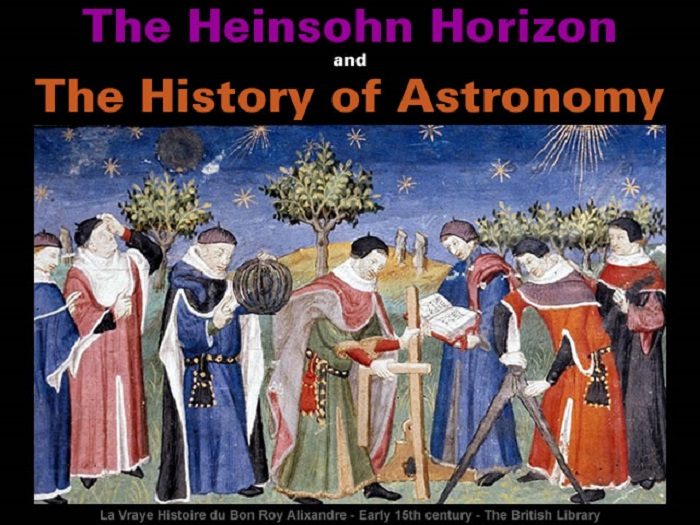
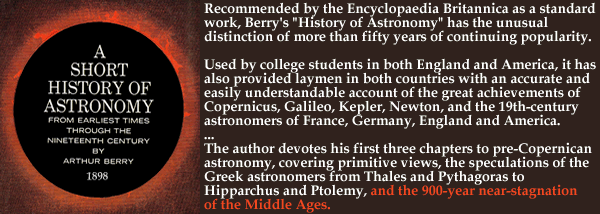
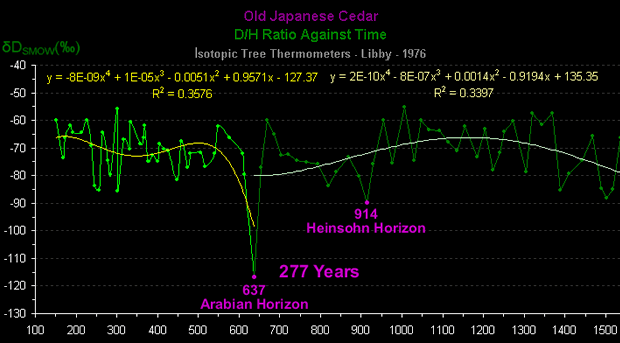
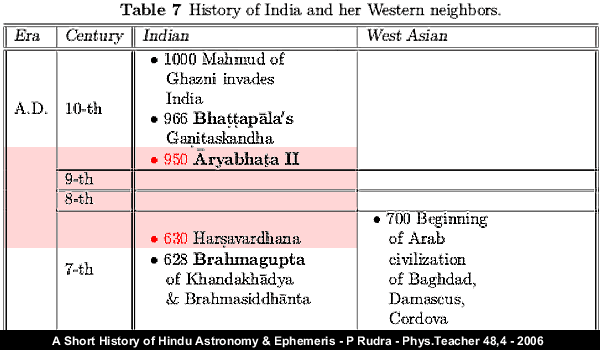
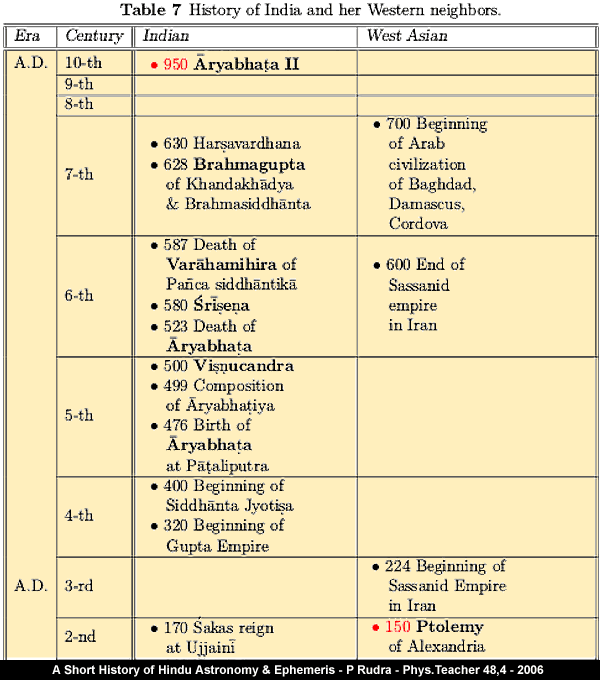
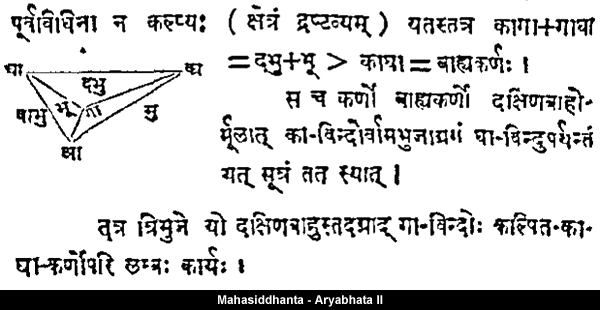
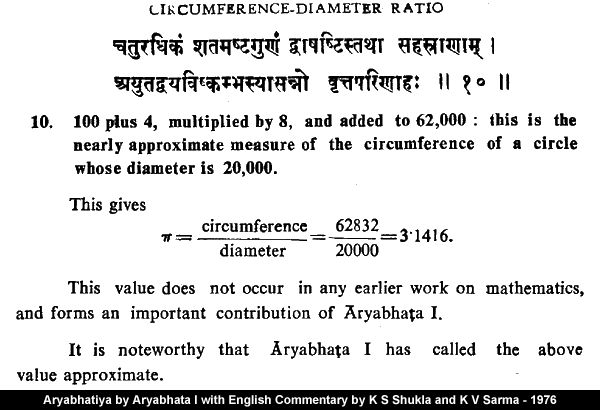



[Link]
He has been published at first at the beginning of the 16th century. His drawings are just a little bit inferior to the maps by Oronce Finaeus and Abraham Ortelius, later 16th century geographers.
His later relative, Giovanni Battista Tolomei. The picture gives his name in latin : Ptolemaeus
[Link]